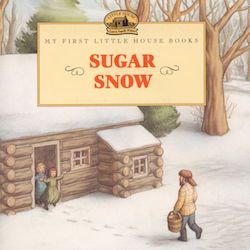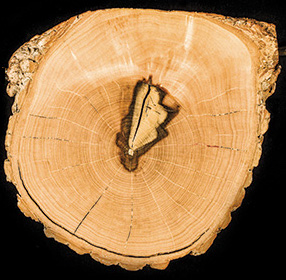Maple Trees and Their Habitat
Maple trees are a natural resource that are found almost anywhere but are most prevalent in the Northern Hemisphere. They are hardy but prefer, and are found, mostly in cool, wet climates. They like well-drained soil that is sandy or clayey with loose texture. There are at least one hundred species of maple trees. Fourteen species are found in the United States, with the majority of them found in the northeast and midwest sections of our country. Maple syrup can be made from any species of maple tree. Most maple syrup is made from the sugar maple due to its high sugar content. Generally, the ratio of sap to syrup for the sugar maple is 40 to 1 (40 gallons of sap yields one gallon of syrup).5
Sugar maple trees grow abundantly in the northeastern United States and is the state tree for New York, Vermont, West Virginia, and Wisconsin. Sugar maples grow to a height of 60-75 feet and a spread of 40-50 feet at maturity. They can grow 12-24 inches a year and can live for over 400 years. The sugar maple leaf can be identified by its five distinct coarsely toothed lobes connected by shallow U-shaped notches. Leaves measure 3-5 inches at maturity, are medium to dark green, and turn yellow, burnt orange, and red in the fall.4
Processing Maple Sap into Syrup
A maple tree should be at least 10-12 inches in diameter before it is tapped for sap. A tree this size would be about 30-40 years old. Tapping a tree does not damage or endanger its health, although it does create a wound. This wound can recover by growing over its tap hole within the next year. Some producers will alternate tapping trees each year. A tree with a 21-27 inch diameter can support two taps, and those with a greater than 27 inch diameter can support three taps. Sugarmakers begin tapping trees in February. A taphole is drilled and a spout is placed in the hole and tapped into place. Most commercial operations attach tubing to the spout, but smaller or historical farms will place a bucket under the spout.
Weather is an important factor for a successful maple syrup harvest. The best weather for production is when the temperature reaches 40 degrees during the day and 20 degrees during the night. This thawing and freezing cycle creates pressure changes inside the tree that causes sap flow. Sugar is stored below ground in the root system over the winter, and pressure changes transfer the sap above the ground. If it is too cold, the sap will take longer to run, and if it is very cold, the sap might not run at all. The average sugaring season (when sap is collected and maple syrup is made) is between 4-6 weeks, but can be as short as two weeks or as long as two months. The best sap is tapped in the early part of the sugaring season.
As the sap flows from a taphole, it is either drawn through tubing to storage tanks in the sugar house using a vacuum or it is collected in buckets and gathered by hand. From the storage tanks, the sap is often put through a reverse osmosis machine which takes some of the water from the sap. The sap is then put into an evaporator where it is boiled. As the water in the sap evaporates, the sap thickens and the sugar caramelizes. When the temperature reaches 219°F, the syrup is ready to be drawn off, filtered, adjusted for density, and graded for flavor and color.6
The History of Maple Syrup Production
The first maple syrup production is often credited to the indigenous tribes living in the northeast region of the United States. It is believed that the early European explorers learned the technique for making syrup from the Native Americans. There are many legends about the first discovery of maple syrup. The Legend of Chief Woksis is& an Iroquois legend about how maple sap was accidentally boiled down to discover maple syrup.
There are many ways to enjoy maple syrup. It is most often poured over the top of pancakes, waffles, French toast, or oatmeal and is also used in baking. When shopping in the grocery store, be sure to recognize the difference between pure maple syrup (made from the sap of a maple tree) and table syrup (made from artificial flavors).


